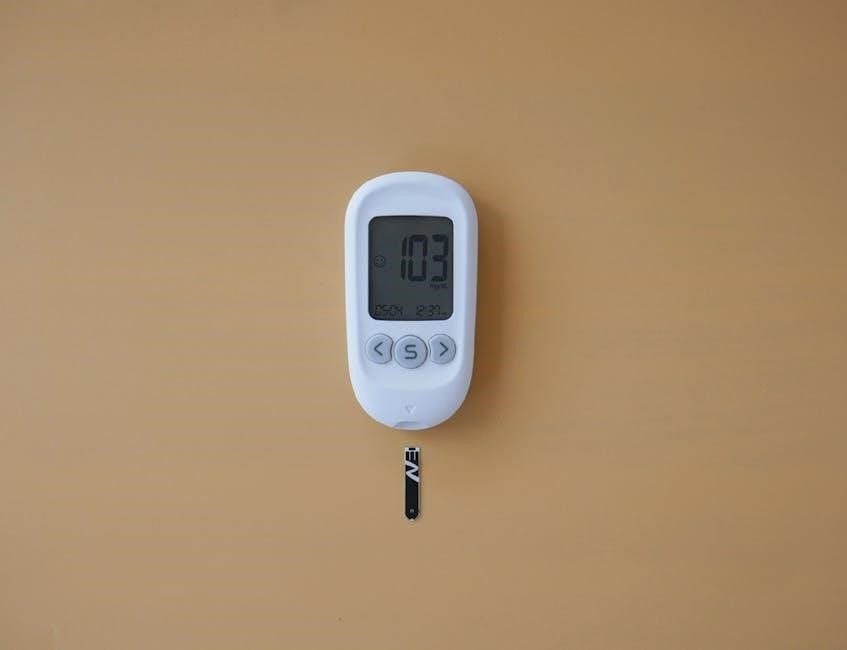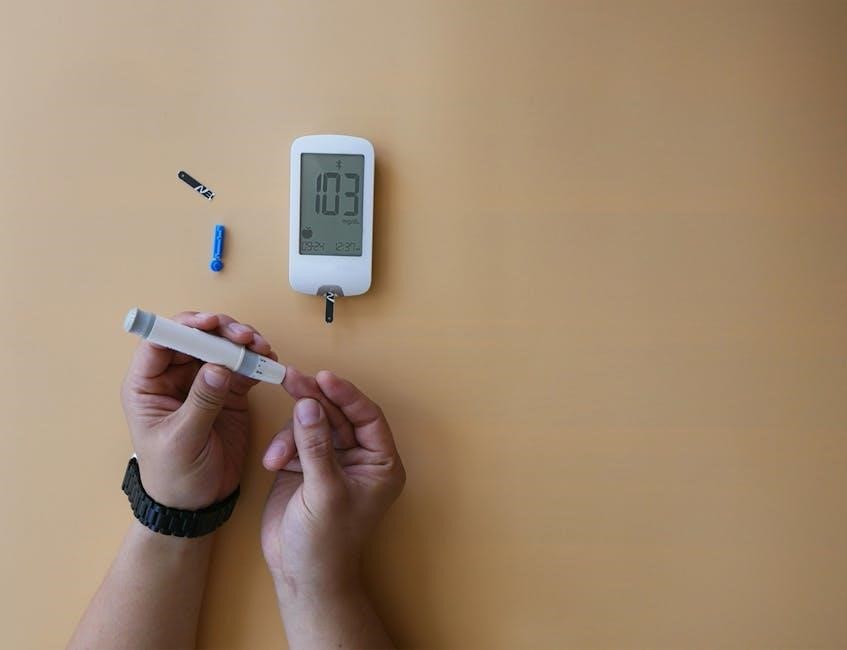Welcome to the B&D Garage Doors Manual, your comprehensive guide to installing, operating, and maintaining your garage door system safely and effectively.
Overview of B&D Garage Doors
B&D Garage Doors is a trusted name in garage door solutions, offering a wide range of high-quality products designed for durability, security, and aesthetic appeal. Known for their innovative designs, B&D provides sectional, roller, and panelift doors, along with advanced automatic openers. Their products are engineered to meet diverse customer needs, ensuring smooth operation and long-lasting performance. With a commitment to safety and energy efficiency, B&D garage doors are a popular choice for homeowners seeking reliable and stylish solutions for their garages.
Importance of the Manual for Users
The B&D Garage Doors Manual is an essential resource for users, providing detailed instructions for safe installation, operation, and maintenance. It ensures users understand safety precautions, optimal usage, and troubleshooting tips. The manual helps prevent accidents and extends the lifespan of the garage door system. By following the guidelines, users can avoid costly repairs and ensure smooth functionality. Additionally, it serves as a reference for future adjustments or upgrades, making it a crucial tool for maximizing the performance and longevity of B&D garage door systems.
Safety Rules and Precautions
Ensure safe operation by wearing protective gear, keeping the area clear, and avoiding hazardous conditions. Always follow manufacturer guidelines to prevent accidents and ensure proper functionality.

General Safety Guidelines
Always prioritize safety when handling your B&D garage door system. Wear protective gear like gloves and safety glasses during installation or maintenance. Ensure the area around the door is clear of obstacles and children. Never operate the door when it is damaged or malfunctioning. Follow all instructions carefully to avoid accidents. Keep the remote control out of reach of children. Regularly inspect the door and opener for wear and tear. Avoid touching moving parts during operation. Ensure proper ventilation when using chemical products for maintenance. By adhering to these guidelines, you can ensure a safe and efficient garage door system.

Emergency Release Handle Operation
The emergency release handle allows manual operation of your B&D garage door during power failures or system malfunctions. Located near the door, it disengages the opener, enabling you to open or close the door manually. To activate, pull the handle firmly downward until it clicks, then lift the door carefully. Always ensure the door is fully open or closed before re-engaging the opener. This feature ensures safety and accessibility, even when power is lost. Regularly test the handle to ensure smooth operation and refer to the manual for specific instructions.
Manual Release Handle for Power Failures
The manual release handle is a essential feature for operating your B&D garage door during power outages. Located on the opener, it allows you to disengage the motor and manually open or close the door. To use, pull the handle downward until it clicks, then lift or lower the door as needed. This ensures safe and easy access even without power. After restoring power, re-engage the opener by pulling the handle back up. Regular testing of this feature is recommended to ensure smooth operation during emergencies. Always refer to the manual for specific guidance on using this feature effectively.

Understanding the B&D Garage Door Manual
The B&D Garage Door Manual offers detailed guidance for installation, operation, and maintenance. It includes safety tips, technical specifications, and troubleshooting solutions to ensure optimal performance and longevity.
Types of Manuals Available
B&D offers various manuals to cater to different user needs. These include concise, easy-to-follow guides with infographics for homeowners and detailed technical manuals for professionals. Additionally, B&D provides PDF user manuals, service manuals, and operating guides, ensuring comprehensive coverage of installation, maintenance, and troubleshooting. Documents are categorized by product type, such as garage door openers or sectional doors, making it easy to find specific information. Manuals are available on the B&D website or through platforms like ManualsLib, ensuring accessibility for all users. This range of resources helps users navigate their garage door systems confidently and effectively.
Structure and Content of the Manual
The B&D Garage Doors Manual is structured to provide clear, organized information. It begins with safety rules and precautions, followed by technical specifications and default settings. The manual includes detailed installation instructions, maintenance tips, and troubleshooting guides. Advanced features such as automatic resetting of codes are also covered. Each section is designed to address specific user needs, ensuring easy navigation. Whether you’re a homeowner or a professional installer, the manual offers comprehensive guidance to optimize your garage door system’s performance and longevity.
How to Navigate the Manual Effectively
To navigate the B&D Garage Doors Manual effectively, start by reviewing the table of contents to identify relevant sections. Begin with the safety rules and precautions to ensure safe handling. For technical details, refer to the system specifications and default settings. Use the index or search function to locate specific topics quickly. Pay attention to visual aids like diagrams and infographics for clearer understanding. For troubleshooting, jump directly to the error codes section. Always follow the logical flow of instructions, starting from installation to maintenance, to make the most of your manual.

System Specifications and Default Settings
B&D garage door systems feature advanced motors like the Spido600, designed for sectional doors up to 9.6m². Default settings include safety sensors and automatic limits for smooth operation.
Technical Specifications of B&D Garage Doors
B&D garage doors are designed with precision, offering models like the N80 and DF98, featuring dimensions and materials tailored for durability. The Spido600 motor supports sectional doors up to 9.6m², ensuring smooth operation. The Controll-A-Door opener, part number 059778, is built under ISO9002 certification, guaranteeing quality. These systems include features like automatic limits and safety sensors. Optional extras such as insulation and window inserts enhance functionality. For exact measurements and compatibility, refer to the manual. These specifications ensure reliability and performance for various garage door needs.
Default Settings and Configurations
B&D garage doors come with predefined settings for seamless operation. Default configurations include automatic limits, safety sensors, and emergency release handles. These settings ensure optimal performance and safety. The door is pre-configured to open and close within specified limits, preventing damage or injury. Users can adjust these settings via the control panel, but factory defaults are designed for efficiency. Regular maintenance and troubleshooting can restore default performance if adjustments are made. Always refer to the manual for specific configuration instructions to avoid system malfunctions and ensure proper functionality.
Adjusting Settings for Optimal Performance
For optimal performance, users can fine-tune their B&D garage door settings. Adjustments include limit settings for opening and closing positions, force sensitivity, and sensor alignment. These tweaks ensure smooth operation and prevent wear. Use the control panel or remote to modify settings, following manual guidelines. Regular checks and minor adjustments maintain efficiency and safety. Proper alignment of sensors and balanced force settings prevent accidents. Refer to troubleshooting sections if issues arise after adjustments. Always test settings post-adjustment to ensure reliability. Keep the manual handy for detailed instructions on customizing your garage door system effectively. Adjustments should be made cautiously to avoid system errors.

Operating Controls and Features
B&D garage doors feature intuitive controls, including wall buttons, remote transmitters, and sensors. They offer smooth automatic operation, emergency release handles, and self-locking mechanisms for added security and convenience.
Understanding Operating Controls
B&D garage doors come with user-friendly controls designed for seamless operation. The wall-mounted control panel allows easy access to primary functions, while remote transmitters provide convenience. Sensors ensure smooth and safe automatic operation. Emergency release handles enable manual operation during power outages. The system also features automatic resetting of codes and limits after a power failure. Self-locking mechanisms enhance security, eliminating the need for manual locking. These controls are designed to offer a balance of convenience, safety, and reliability, ensuring your garage door operates efficiently under various conditions.
Advanced Features of B&D Garage Doors
B&D garage doors offer advanced features for enhanced convenience and security. The automatic resetting of codes and limits ensures seamless operation after power failures. Manual release handles provide easy switching to manual mode during emergencies. Self-locking mechanisms eliminate the need for manual locking, offering added security. Additionally, B&D systems are compatible with modern accessories like timers, battery backups, and smart home integrations. These features ensure your garage door operates smoothly, securely, and efficiently, catering to both residential and commercial needs with cutting-edge technology and reliability.
Automatic Resetting of Codes and Limits
B&D garage door systems feature automatic resetting of codes and limits, ensuring smooth operation after power failures. This function restores factory settings, eliminating the need for manual adjustments. It enhances security by reactivating safety features and access codes, preventing unauthorized access. The system also recalibrates door travel limits, ensuring proper alignment and smooth movement. This innovative feature minimizes downtime and user inconvenience, providing a reliable and hassle-free experience. It is a key advantage of B&D systems, designed to maintain functionality and safety effortlessly. Automatic resetting ensures your garage door operates optimally every time.

Installation and Setup Guide
The B&D Garage Doors Manual provides detailed instructions for professional installers, covering tools, safety, and step-by-step procedures for models like Controll-A-Door and Spido600. A drill, tape measure, and screwdrivers are essential tools for installation. Ensure proper alignment and secure mounting to guarantee smooth operation. Follow the manual carefully to avoid errors and ensure safety. Proper installation is crucial for optimal performance and longevity of your garage door system. Always refer to the specific model’s instructions for precise guidance. This guide is intended for professional installers only. Tools like a drill, tape measure, and screwdrivers are necessary for installation. Ensure all parts are securely fastened and aligned correctly. The manual includes diagrams and troubleshooting tips for common issues. Adhere to safety precautions to prevent accidents. The Spido600 motor is designed for sectional doors up to 9.6 meters, offering a time-saving solution. Professional installation ensures reliability and safety. The Controll-A-Door model requires precise measurements and adjustments for proper functionality. Use the provided hardware and follow torque specifications to avoid damage. Regular maintenance tips are included to keep your garage door operating smoothly. The manual also covers emergency release handles and automatic resetting features. Familiarize yourself with all components before starting the installation. Proper installation ensures smooth operation and longevity of your B&D garage door system. Always follow the manufacturer’s guidelines for optimal results. The guide is comprehensive, covering everything from initial setup to final testing. Ensure all safety features are activated after installation. Refer to the troubleshooting section if issues arise; The manual is designed to be user-friendly, with clear instructions and visuals. Professional installers will find the guide thorough and informative. Proper installation is key to enjoying the full benefits of your B&D garage door. The guide also includes warranty information and customer support details. Keep the manual handy for future reference and maintenance tasks. The B&D Garage Doors Manual is your go-to resource for a successful installation and long-term satisfaction with your garage door system. Ensure all steps are followed meticulously for optimal performance. The manual is a valuable tool for installers, providing detailed insights and solutions. By following the guide, you can ensure a safe and efficient installation process. The B&D Garage Doors Manual is comprehensive, covering all aspects of installation and setup for a seamless experience. Always prioritize safety and precision during the installation process. The guide is tailored for professionals, offering expert advice and technical specifications. Trust the B&D Garage Doors Manual to help you achieve a flawless installation every time. The manual is a testament to B&D’s commitment to quality and user satisfaction. Use it wisely to ensure your garage door operates at its best. The B&D Garage Doors Manual is an essential resource for installers, providing everything needed for a successful installation and setup. Follow it carefully for lasting results. The guide is detailed, ensuring no step is overlooked. It’s your key to a perfectly installed garage door system. The B&D Garage Doors Manual is designed to make installation straightforward and efficient. Rely on it for a job well done. The manual is a comprehensive guide that covers every aspect of installation, ensuring a smooth and safe process. Use it to achieve professional-grade results. The B&D Garage Doors Manual is your ultimate installation companion, offering clear instructions and expert advice. Follow it for a trouble-free experience. The guide is thorough, ensuring even the smallest details are addressed. It’s your roadmap to a successful garage door installation. The B&D Garage Doors Manual is a must-have for professional installers, providing all the necessary information for a flawless setup. Refer to it often for guidance. The manual is packed with useful information, making it an indispensable tool for installers. Use it to ensure your work meets the highest standards. The B&D Garage Doors Manual is a detailed and informative guide that simplifies the installation process. Follow it closely for optimal results. The guide is a valuable resource, offering insights and solutions for a seamless installation. Rely on it for a professional finish. The B&D Garage Doors Manual is a comprehensive installation guide that covers every step of the process. Use it to ensure a perfect setup every time. The manual is designed to be user-friendly, making it easy for professional installers to follow. It’s your key to a successful installation. The B&D Garage Doors Manual is a thorough guide that ensures a smooth and safe installation process. Follow it carefully for lasting performance. The guide is a trusted resource for installers, offering detailed instructions and expert tips. Use it to achieve a flawless installation. The B&D Garage Doors Manual is a must-have for professional installers, providing everything needed for a successful setup. Refer to it often for guidance. The manual is a valuable tool, offering clear instructions and technical specifications. It’s your go-to resource for a perfect installation. The B&D Garage Doors Manual is a detailed guide that simplifies the installation process. Follow it closely for optimal results. The guide is comprehensive, covering all aspects of installation and setup. Use it to ensure a seamless experience. The B&D Garage Doors Manual is a trusted resource for professional installers, providing expert advice and detailed instructions. Rely on it for a job well done. The manual is a must-have for a successful installation, offering everything you need to know. Follow it carefully for lasting satisfaction. The B&D Garage Doors Manual is a thorough guide that ensures a smooth and efficient installation process. Use it to achieve professional-grade results. The guide is a valuable resource, offering insights and solutions for a trouble-free setup. Refer to it often for guidance. The B&D Garage Doors Manual is a comprehensive guide that covers every step of the installation process. Follow it closely for optimal performance. The manual is a trusted tool for professional installers, providing clear instructions and technical specifications. Use it to ensure a flawless installation. The B&D Garage Doors Manual is a detailed resource that simplifies the setup process. Follow it carefully for a seamless experience. The guide is a must-have for installers, offering expert advice and solutions. Rely on it for a successful installation. The B&D Garage Doors Manual is a thorough guide that covers all aspects of installation. Use it to achieve a perfect setup every time. The manual is a valuable resource for professional installers, providing everything needed for a successful installation. Follow it closely for lasting results. The B&D Garage Doors Manual is a comprehensive guide that ensures a smooth and efficient installation process. Refer to it often for guidance. The guide is a trusted resource, offering detailed instructions and expert tips; Use it to achieve a flawless installation. The B&D Garage Doors Manual is a must-have for professional installers, providing all the necessary information for a trouble-free setup. Follow it carefully for optimal performance. The manual is a detailed guide that simplifies the installation process. It’s your key to a successful and safe setup. The B&D Garage Doors Manual is a thorough resource that covers every step of the installation process. Use it to ensure a perfect finish. The guide is a valuable tool for installers, offering clear instructions and technical specifications. Follow it closely for lasting satisfaction. The B&D Garage Doors Manual is a comprehensive guide that makes installation straightforward and efficient. Rely on it for a job well done. The manual is a must-have for professional installers, providing everything needed for a successful setup. Use it to achieve professional-grade results. The B&D Garage Doors Manual is a detailed guide that ensures a smooth and safe installation process. Follow it carefully for optimal performance. The guide is a trusted resource, offering expert advice and solutions. Refer to it often for guidance. The B&D Garage Doors Manual is a thorough guide that covers all aspects of installation and setup. Use it to achieve a flawless installation every time. The manual is a valuable resource for professional installers, providing clear instructions and technical specifications. Follow it closely for lasting results. The B&D Garage Doors Manual is a comprehensive guide that simplifies the installation process. It’s your ultimate installation companion. The guide is a must-have for installers, offering detailed insights and solutions. Use it to ensure a seamless experience. The B&D Garage Doors Manual is a detailed resource that ensures a smooth and efficient setup. Follow it carefully for optimal performance. The manual is a trusted tool for professional installers, providing everything needed for a successful installation. Rely on it for a job well done. The B&D Garage Doors Manual is a thorough guide that covers every step of the process. Use it to achieve a perfect setup every time. The guide is a valuable resource, offering expert advice and technical specifications. Follow it closely for lasting satisfaction. The B&D Garage Doors Manual is a comprehensive guide that makes installation straightforward and efficient. It’s your go-to resource for a successful setup. The
Step-by-Step Installation Instructions
Begin by gathering all tools and components, including a drill, tape measure, and screwdrivers. Carefully unpack and organize the parts to avoid damage or loss. Start by mounting the motor unit securely to the garage ceiling, ensuring proper alignment with the door opening. Next, attach the door brackets to the garage door, following the manufacturer’s measurements for accurate placement. Connect the door arms to the motorized trolley, ensuring they are tightly secured. Install the safety brackets on both sides of the door opening to prevent accidental detachment. Finally, plug in the motor and test the door’s operation, ensuring smooth movement and proper alignment. Refer to the manual for specific torque settings and safety guidelines to complete the installation successfully.
Tools Required for Installation
To ensure a smooth installation process, gather the necessary tools and materials. These include a drill, screwdrivers (Phillips and flathead), wrenches, a tape measure, and a spirit level. Additionally, a ladder or step stool will be needed for ceiling-mounted components. A socket set may also be required for certain fasteners. Make sure all tools are in good condition and easily accessible. Refer to the manual for specific tools recommended by B&D. Having all equipment ready beforehand will help avoid delays and ensure the installation is completed safely and efficiently. Proper tools are essential for accurate and secure assembly of your garage door system.
Professional Installation Recommendations
For optimal performance and safety, B&D strongly recommends professional installation by a certified technician. A professional installer ensures compliance with safety standards and manufacturer guidelines, minimizing the risk of accidents or malfunctions. They possess the expertise to handle complex configurations and troubleshoot potential issues. Additionally, professional installation validates your warranty and guarantees a seamless setup. Always verify the installer’s qualifications and experience with B&D products to ensure a high-quality installation. This approach provides peace of mind and ensures your garage door operates efficiently for years to come.

Maintenance and Troubleshooting
Regular lubrication of moving parts and checking springs ensures smooth operation. Addressing error codes promptly prevents major issues. Consult the manual for troubleshooting common problems effectively.
Regular Maintenance Tips
Regular maintenance ensures optimal performance and longevity of your B&D garage door. Lubricate hinges, rollers, and springs every six months with a silicone-based spray. Inspect tracks for cleanliness and alignment, clearing debris promptly. Check cables and springs for wear; replace them if damaged. Test door balance monthly by manually lifting it halfway. Clean photo-eye sensors to maintain proper auto-reverse functionality. Schedule professional inspections annually for advanced adjustments. Always refer to your manual for specific maintenance recommendations tailored to your model. Consistent upkeep prevents unexpected malfunctions and ensures smooth operation year-round.
Troubleshooting Common Issues
Identify and resolve common issues with your B&D garage door by checking error codes and performing simple inspections. If the door reverses unexpectedly, ensure sensors are clean and aligned. For doors that won’t close, verify obstructions and proper alignment of tracks. Lubricate moving parts if the door is noisy. Refer to your manual for specific error code solutions. If issues persist, contact a professional. Regular checks prevent major malfunctions and ensure reliable operation. Always follow safety guidelines when troubleshooting to avoid accidents or further damage.
Error Codes and Solutions
Consult your B&D garage door manual for specific error codes and solutions. Common issues include codes like E1 (safety sensor misalignment) and E2 (door not closing fully). For E1, clean and align sensors. For E2, check for obstructions and ensure tracks are clear. Refer to the troubleshooting section for detailed guidance. If problems persist, reset the system or contact a professional. Always follow safety guidelines and manufacturer instructions to avoid further issues and ensure proper functionality. Regular maintenance can prevent many errors and extend the lifespan of your garage door system.
Warranty and Support Information
B&D Garage Doors provides warranty coverage and dedicated support services. Refer to your manual or contact customer support for detailed warranty terms and repair policies.
Warranty Terms and Conditions
B&D Garage Doors offers a comprehensive warranty program. The warranty period varies by product, covering defects in materials and workmanship under normal use. Proper installation by a certified professional is mandatory to maintain warranty validity. Misuse, improper maintenance, or unauthorized modifications may void the warranty. For detailed terms, refer to the official B&D documentation or contact their customer support team. The warranty does not cover damage caused by external factors or wear and tear. Always ensure compliance with the manual’s guidelines for warranty coverage.
Customer Support and Service Options
B&D Garage Doors provides exceptional customer support to ensure user satisfaction. Their dedicated team is available to assist with inquiries, troubleshooting, and service requests. For convenience, users can access online resources, including manuals, FAQs, and troubleshooting guides. Additionally, B&D offers professional installation and maintenance services through certified technicians. Customers can contact support via phone, email, or through the official website. The company emphasizes prompt and reliable service to address any concerns, ensuring optimal performance and longevity of their garage door systems. Regular updates and notifications are also provided to keep users informed.
Repair and Replacement Policies
B&D Garage Doors offers comprehensive repair and replacement policies to ensure customer satisfaction. Repairs are typically covered under warranty for defects in materials or workmanship, usually valid for 12 months from installation. For non-warranty issues, B&D provides affordable repair services through authorized technicians. Replacement parts are readily available and must be genuine B&D components to maintain system integrity. Users are advised to contact B&D support to initiate repair or replacement processes. DIY repairs are discouraged to avoid voiding warranties or causing safety hazards. Professional assistance is recommended for complex issues to ensure reliability and longevity of the garage door system.
Compatible Accessories and Upgrades
B&D offers a range of accessories like automatic openers, smart controllers, and safety sensors to enhance functionality. Upgrades include energy-efficient motors and advanced security features for convenience.
Available Accessories for B&D Garage Doors
B&D offers a variety of accessories to enhance your garage door system, including automatic openers, remote transmitters, and safety beams for added convenience. Manual release handles allow for easy operation during power failures, while self-locking mechanisms provide security. Additional upgrades include weather seals, door stops, and decorative hardware to customize your door. These accessories are designed to improve functionality, safety, and aesthetic appeal, ensuring your garage door system meets your specific needs. Optional upgrades like smart controllers and energy-efficient motors are also available for advanced performance.
Upgrading Your Garage Door System
Upgrading your B&D garage door system enhances functionality and performance. Consider adding automatic openers with smart technology for remote access via smartphone apps. Energy-efficient motors reduce power consumption while ensuring smooth operation. Advanced safety features, such as obstacle detection and automatic locking, improve security. Weather-resistant seals and decorative hardware can also be installed to protect and customize your door. Upgrades like touchpad entry systems or voice control integration offer modern convenience. Always consult the manual for compatibility and installation guidelines to ensure seamless upgrades tailored to your specific garage door model.
Recommended Additional Features
Consider adding features like emergency release handles for manual operation during power failures and automatic resetting of codes for enhanced security. A manual release handle allows effortless door operation in case of power outages. Self-locking mechanisms eliminate the need for manual locking, ensuring convenience and security. Upgrading to smart technology enables remote access and voice control, modernizing your garage door system. These additional features enhance functionality, safety, and convenience, ensuring your B&D garage door operates efficiently and meets your specific needs.

Best Practices for Manual Usage
Always read the manual carefully, follow safety guidelines, and refer to troubleshooting sections for common issues. Regularly update your knowledge on new features and maintenance tips.
Reading and Following Instructions Carefully
Reading the B&D garage door manual thoroughly ensures proper installation, operation, and maintenance. Understand each section, including safety rules, technical specifications, and troubleshooting tips. Follow step-by-step instructions for assembling and adjusting components to avoid errors. Pay attention to warnings and cautions to prevent accidents. Familiarize yourself with emergency release handles and manual operation procedures. This careful approach ensures optimal performance, safety, and longevity of your garage door system. Always refer to the manual for guidance, especially during installation or troubleshooting.
Keeping the Manual for Future Reference
It is essential to keep the B&D garage door manual for future reference, as it serves as a valuable resource for troubleshooting, maintenance, and understanding system updates. Store it in an accessible location to ensure quick access when needed. The manual provides detailed guidance for resolving common issues and performing routine checks, ensuring your garage door operates smoothly over time. Referencing it regularly helps maintain safety and optimal performance. By retaining the manual, you can easily address future queries or adjustments, ensuring longevity and reliability of your garage door system.

and Future Trends
Updating Your Knowledge on New Features
Regularly updating your knowledge on new features of the B&D garage door manual ensures you stay informed about the latest advancements and improvements. Familiarize yourself with updated specifications, enhanced safety measures, and advanced operational controls. New features, such as improved motor systems or smart technology integrations, can optimize performance and convenience. Refer to the latest editions of the manual or visit the B&D website for updates. Staying informed allows you to leverage the full potential of your garage door system and adapt to any technological enhancements. This proactive approach ensures safety, efficiency, and long-term satisfaction with your B&D garage door.















